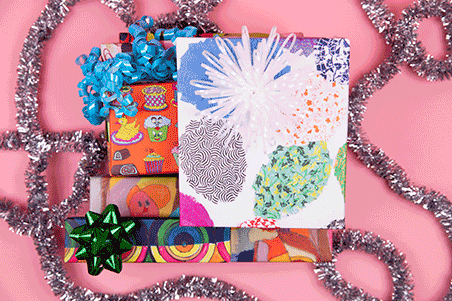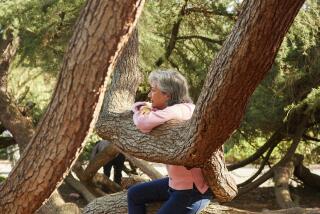Art Opens New Vistas in Alzheimer’s Therapy : Health: Patients work one-on-one with professional artists in an array of media, including paint, photography, music, tapestry and ceramics.
- Share via
BALTIMORE — “I don’t know how to paint,” Fanny Gray said flatly, staring at a blank canvas. But on the wall behind the 75-year-old woman was the framed watercolor she had painted only a few months before.
Fanny Gray has Alzheimer’s disease and lives at the Meridian Heritage nursing home, one of several homes around Baltimore offering art therapy to Alzheimer’s patients to help them express what the disease jumbles.
The use of the arts, including music and dance, are relatively new arrivals to the treatment of Alzheimer’s patients, said Marcia Ory, chief of the Social Science Research on Aging program at the National Institute on Aging in Silver Spring.
“It is not a usual part of recreational therapy,” Ory said. “It’s one of those newer things that are less widely used.”
Alzheimer’s, a progressive deterioration of intellectual function afflicting more than 4 million Americans, leaves its victims disoriented and robs them of memory and communication skills.
Alzheimer’s is believed to be irreversible and has no known cure.
Typically, most standard kinds of recreational therapy strives to orient patients and stimulate their recollection.
Artist Anne Watts coordinates eight-week courses of art therapy offered this year for the first time to 40 men and women at three Baltimore nursing homes.
“When you’re confined to a nursing home, your freedom to be creative is confined to your environment,” Watts said. “That’s why we bring creative energy in from the outside . . . to transcend that feeling of restriction.”
Her program has patients work one-on-one with professional artists in an array of media, including paint, photography, tapestry, ceramics and music.
Many participants don’t recognize their own work. Some can’t remember their instructors. But often they recognize the beauty in what they’ve created.
“You mean I did this all by myself?” said 83-year-old Grace Gunnarsson, another Meridian Heritage resident, after a reminder that left her staring at her own watercolors of plants and animals. “I’m so pleased with these,” she said. “It’s amazing what can be done with such simple objects.”
From a medical viewpoint, although this kind of therapy hasn’t been proved to stop or slow the progress of Alzheimer’s, experts say any mental stimulation is worthwhile.
“There’s little evidence, if any, that such programs restore lost capacity,” said Dr. Robert Roca, an associate professor of psychiatry at Johns Hopkins Medical School. “But I think it’s pretty clear that people that aren’t challenged don’t retain their capacity as well as people who are.”
The instructors believe art helps the patients, even if it can’t untangle their confusion.
“Day-to-day stuff doesn’t exist for them anymore,” said Sherwin Mark, a multimedia artist. “We want them to come out with some kind of confidence in their reality because their reality’s been denied.”
A similar program in California gives Alzheimer’s patients artists’ tools to express what they may no longer say in words.
Now in its fifth year, Memories in the Making, offered by the Alzheimer’s Assn. of Orange County, was started by artist Selly Jenny. She became involved during her mother’s battle with the disease.
In that program, patients work closely with artists who do not teach but who instead act as “art facilitators.”
“The process of art remains intact far into the disease process,” said Linda Scheck, associate director of the Orange County assn.
“The words may be gone, the person may not be able to speak at all,” she said. “But sometimes in repeated sessions when you put the paintbrush in their hands, the Alzheimer’s patients can express a thought or an emotion.
“In a disease that has so many losses,” Scheck said, “here’s a chance for success.”
More to Read
Sign up for Essential California
The most important California stories and recommendations in your inbox every morning.
You may occasionally receive promotional content from the Los Angeles Times.










